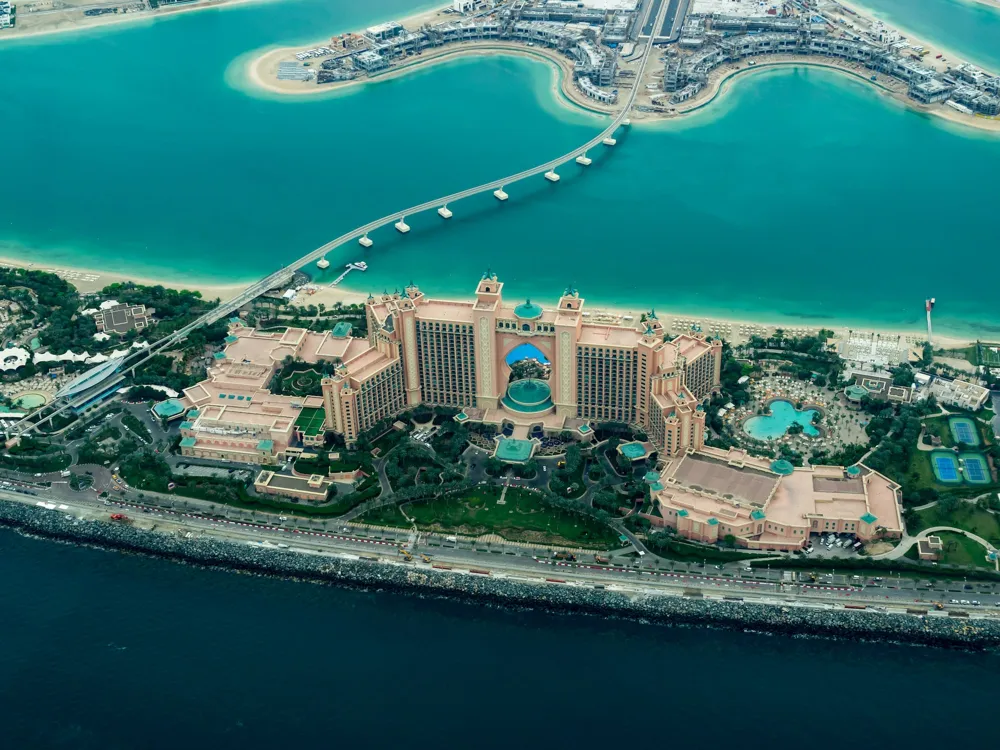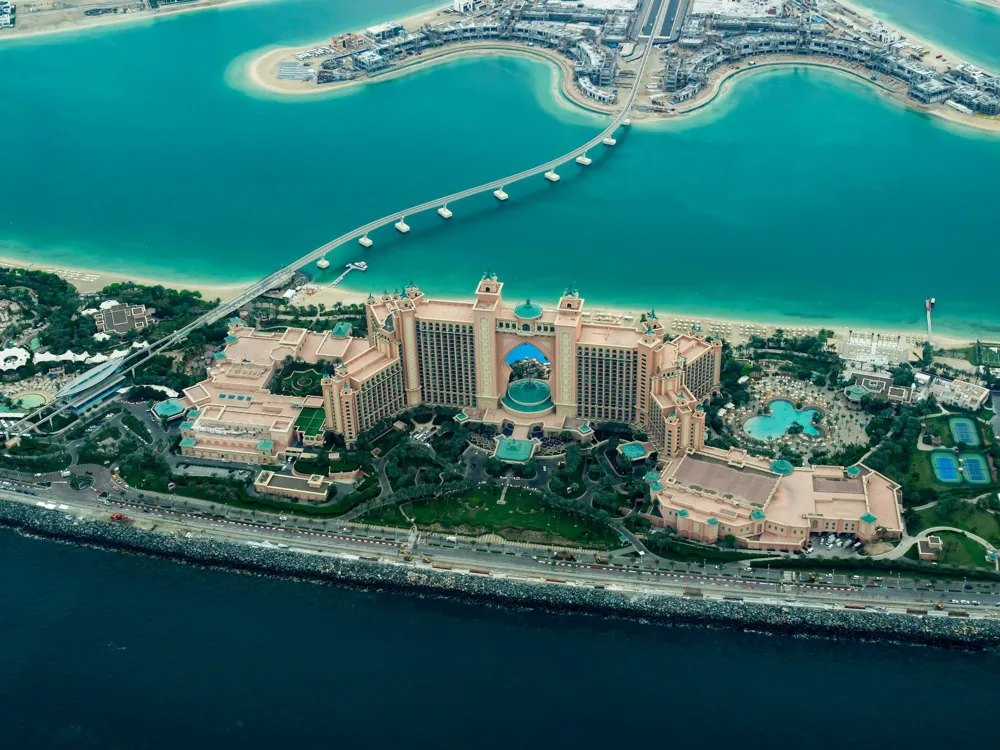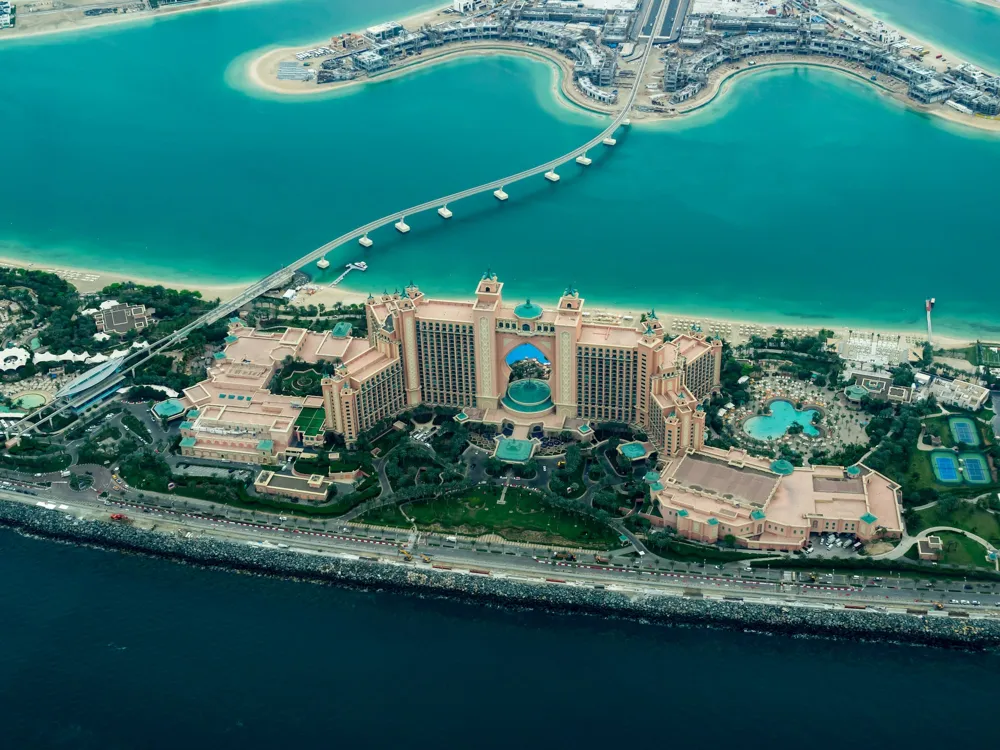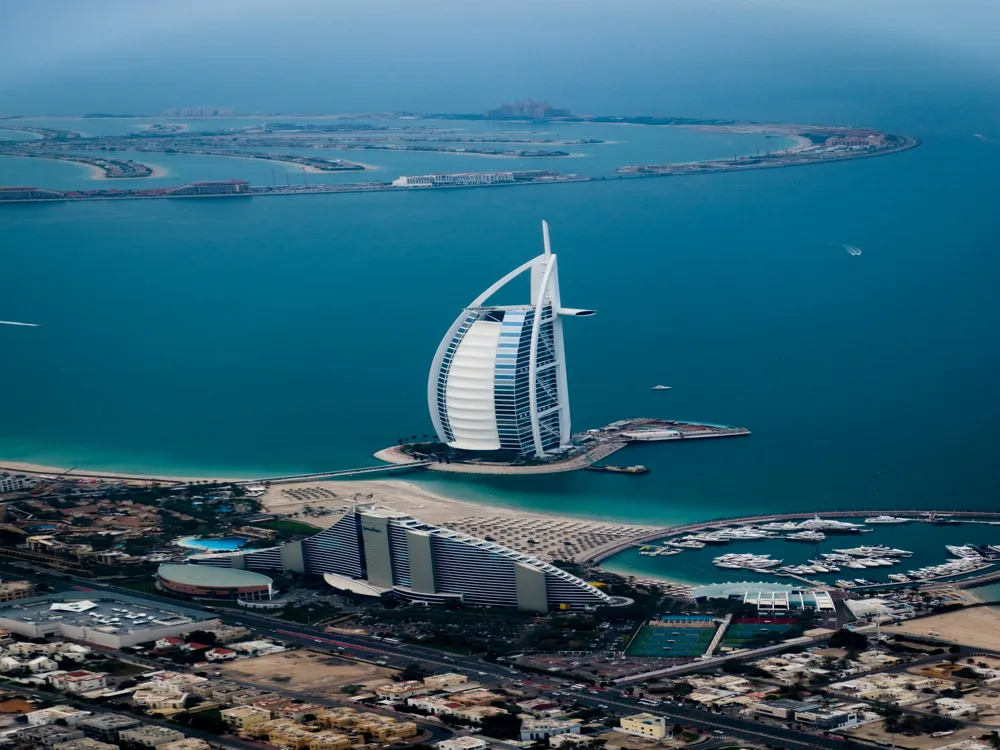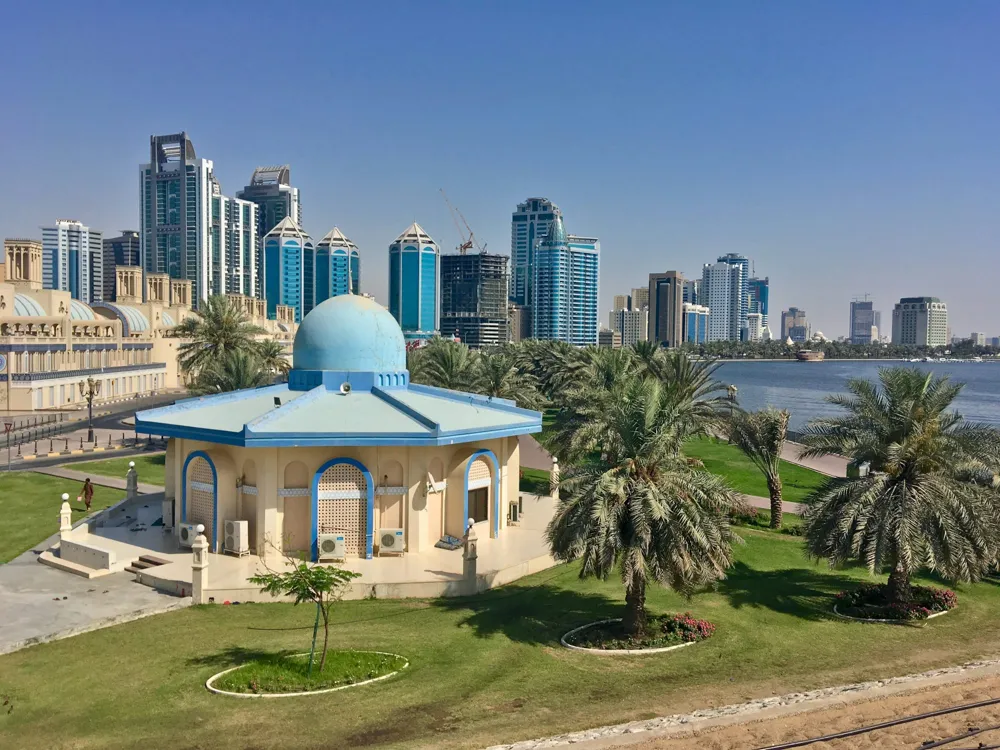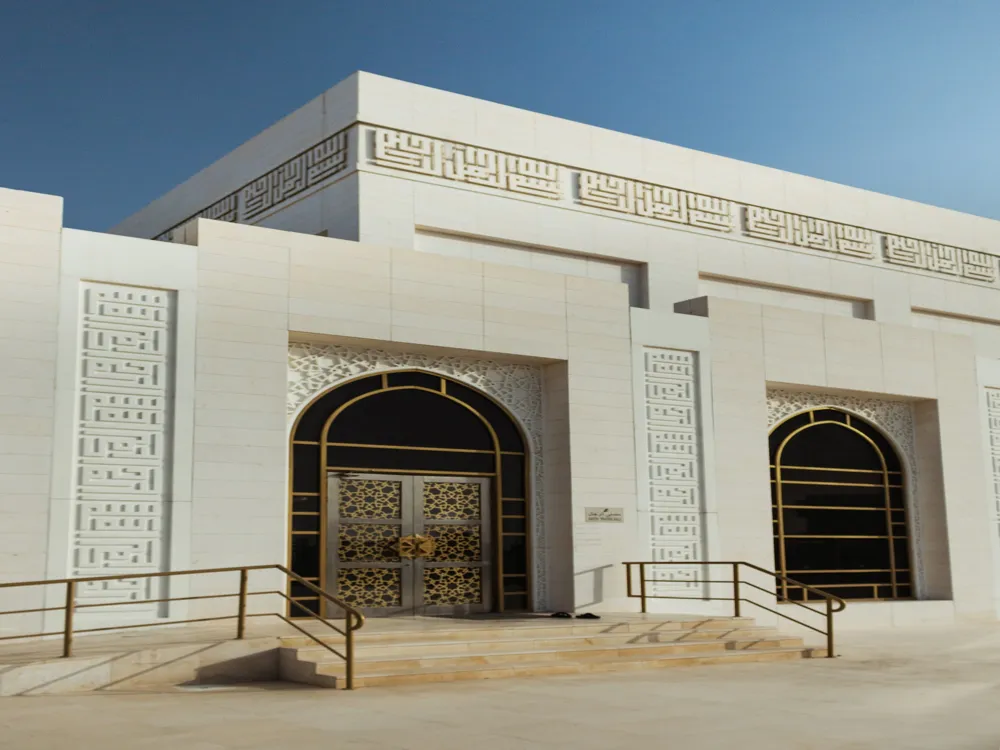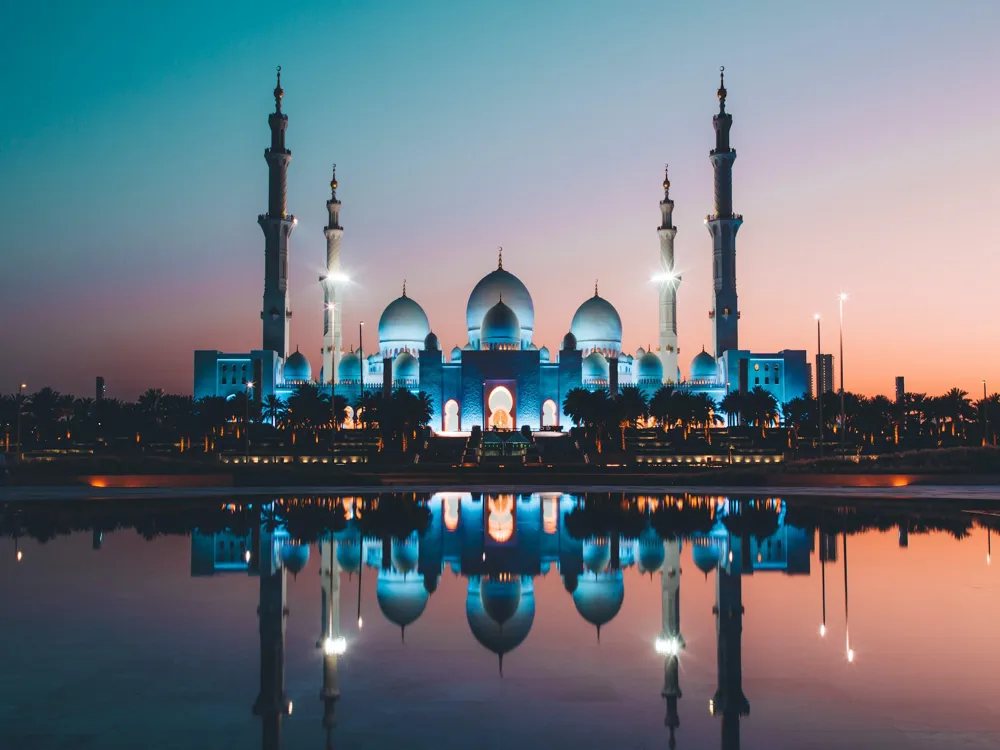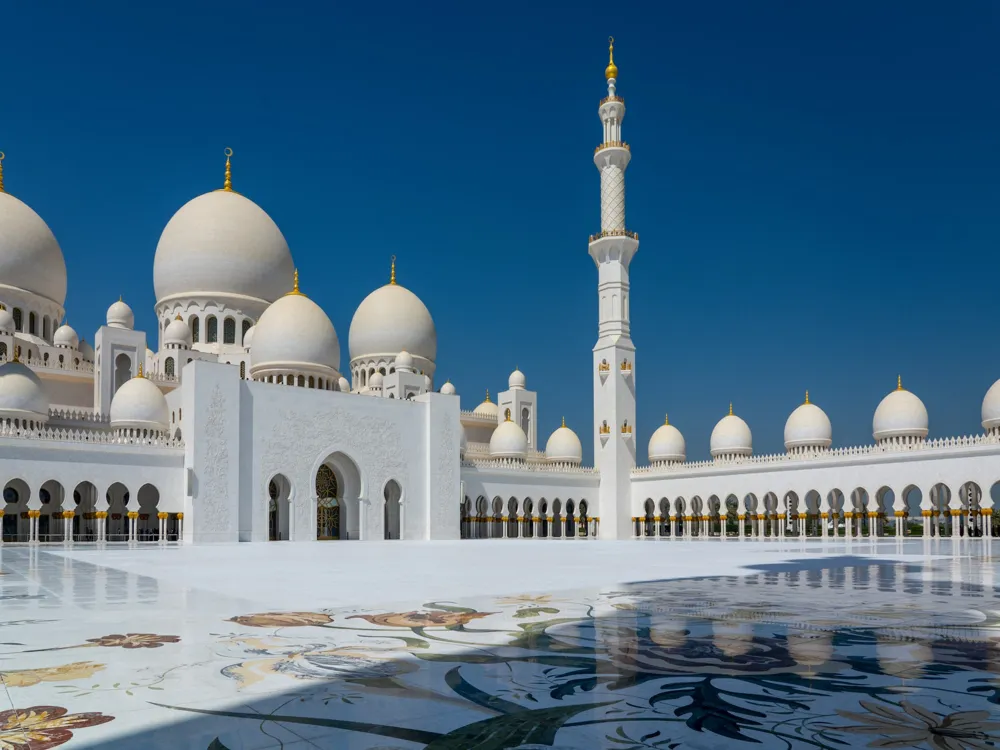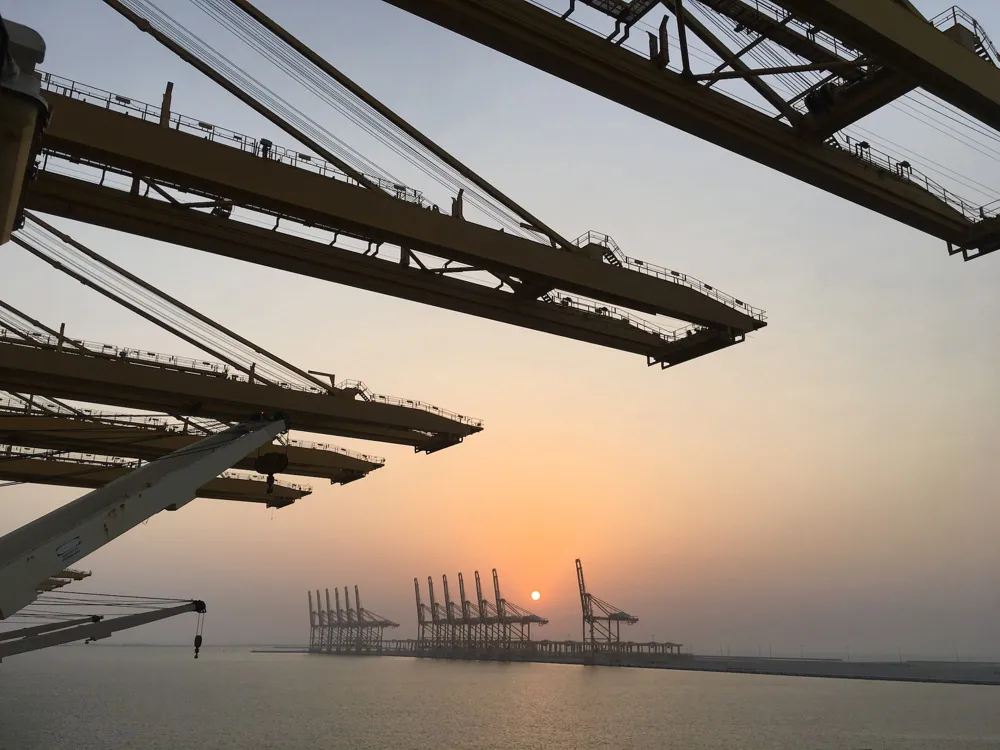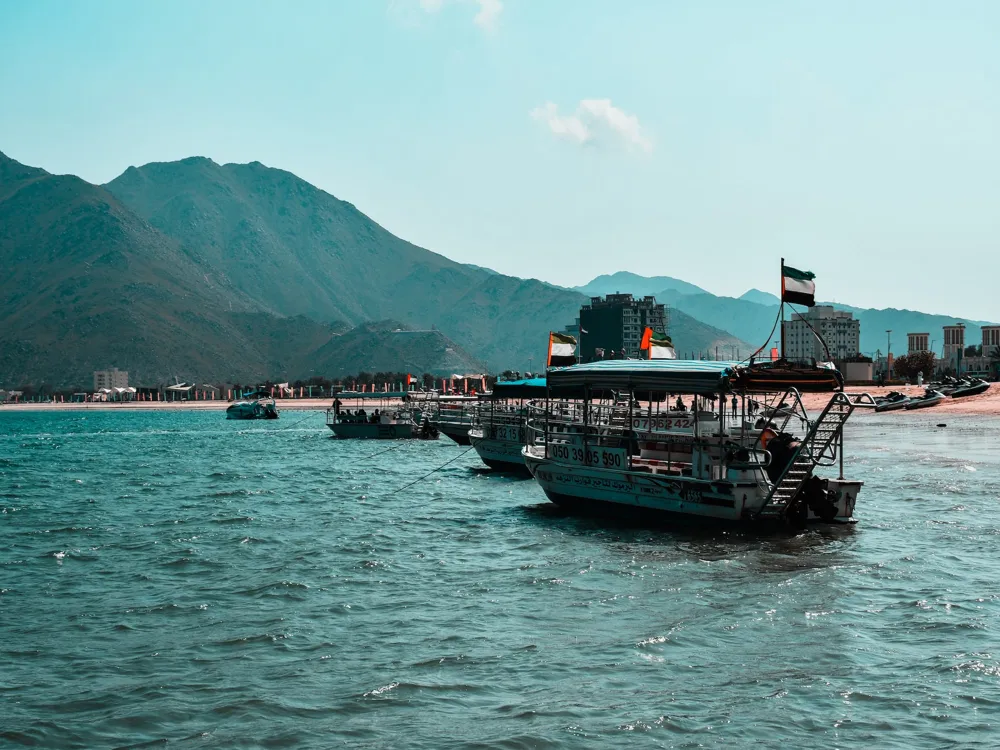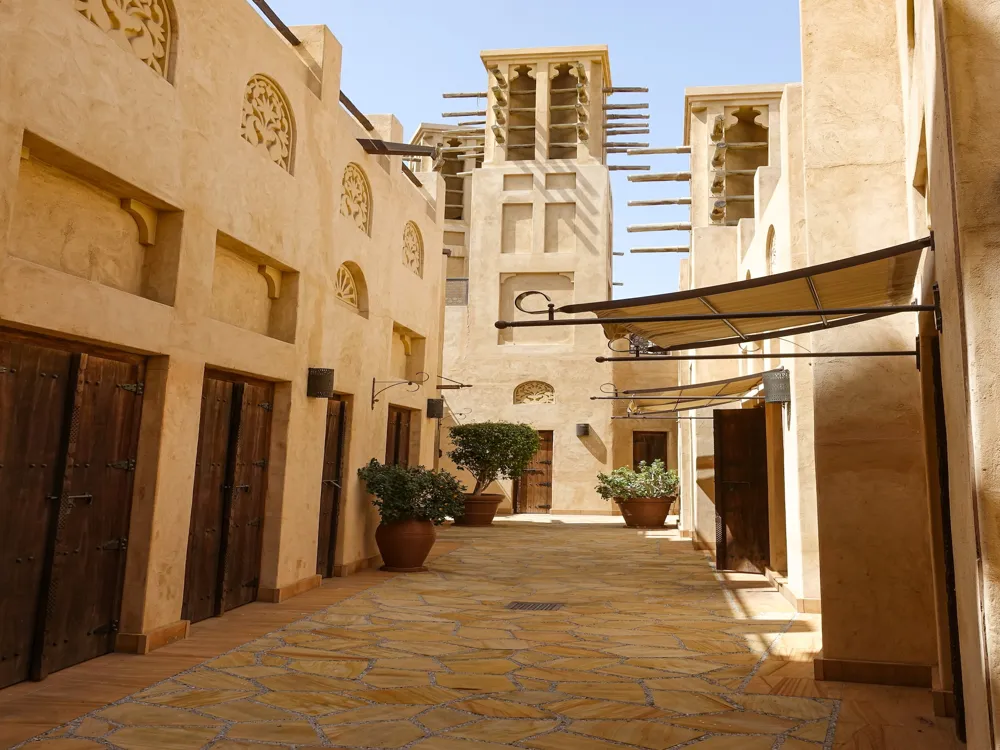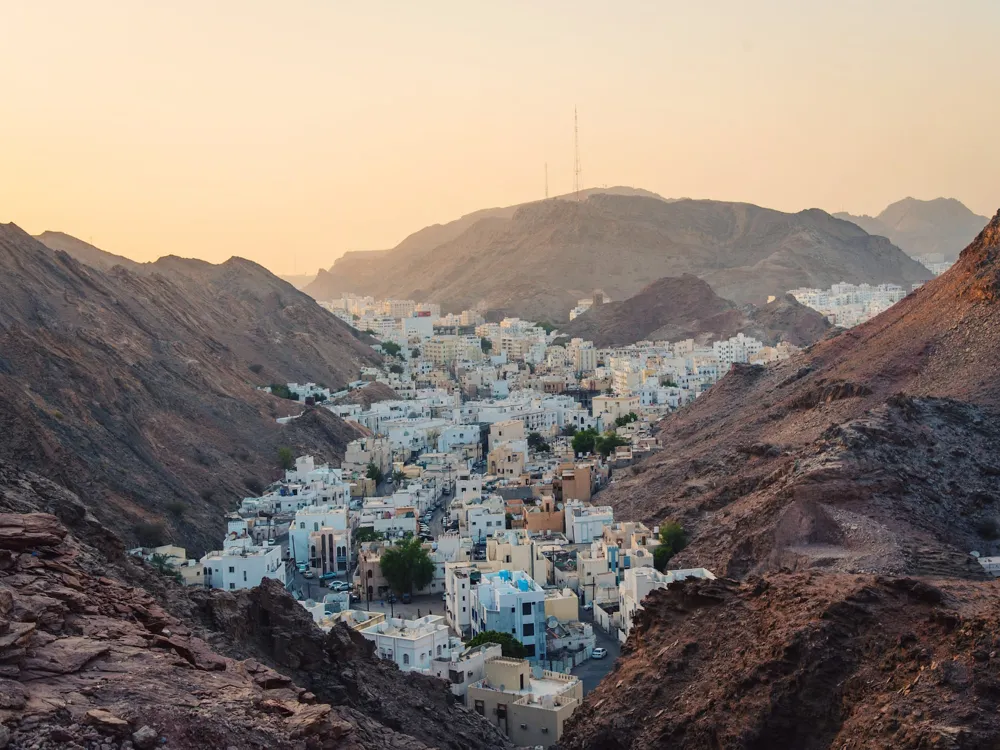Nestled in the heart of Dubai, Madinat Jumeirah stands as a testament to the rich cultural heritage and ambitious architectural endeavors of the United Arab Emirates. This luxurious resort complex, often referred to as the 'City of Jumeirah,' spans over 40 hectares of landscapes and waterways. With its intricate design mirroring an ancient Arabian town, Madinat Jumeirah is not just a tourist destination but a cultural experience, offering a unique blend of the old and the new. It comprises two grand boutique hotels, traditional summer houses, a souk, and multiple world-class restaurants and bars, all interconnected by three kilometers of waterways and landscaped gardens.
The resort's design draws inspiration from traditional Arabian cities, with wind towers, waterways, and a maze of narrow streets creating an aura of times gone by. However, it's equipped with all the modern luxuries and conveniences expected in a premium destination. From its exotic gardens and tranquil waterways to the richly furnished accommodations and state-of-the-art facilities, every detail in Madinat Jumeirah is meticulously crafted to provide an immersive Arabian experience.
Visitors can enjoy a wide range of activities, from relaxing at the Talise Spa, taking a traditional Abra ride through the waterways, to dining at some of Dubai's finest restaurants. Madinat Jumeirah also boasts a 1,000-seat theater and the Madinat Arena, which hosts a variety of entertainment events and conferences. The resort's location near the iconic Burj Al Arab and the Wild Wadi Waterpark makes it a central point for tourists seeking to explore Dubai's many attractions.
The architectural brilliance of Madinat Jumeirah is a harmonious blend of ancient Arabian structures and contemporary design elements. Its layout and aesthetics are deeply rooted in traditional Arabic architectural styles, particularly evident in its use of wind towers, archways, and domes. The resort has been designed to replicate the feeling of a traditional Arabian town, with a contemporary twist to cater to the discerning tastes of modern travelers.
The complex's buildings use traditional materials such as golden sandstone, which gives them a distinctive appearance that reflects the natural landscape of the region. The intricate design patterns, ornate lanterns, and detailed carvings throughout the resort showcase the rich artistic heritage of the Arab world. The waterways, an essential element of Arabian architecture, play a significant role in the design of Madinat Jumeirah, adding to the serene and picturesque ambiance.
The resort’s interior decor is a tapestry of Arabian motifs, luxurious fabrics, and elegant furnishings. Each hotel within the complex has its unique theme and design, yet all adhere to the overarching Arabian aesthetic. The attention to detail is meticulous, with every aspect from the layout of the gardens to the design of the rooms being a testament to the rich cultural heritage of the region.
The ideal time to visit Madinat Jumeirah is between November and March when the weather is cooler and more pleasant. This period also coincides with Dubai's tourist season, offering a vibrant atmosphere and numerous events.
While Madinat Jumeirah is modern, visitors should respect local customs. Modest dress is advisable, especially when visiting public areas and religious sites nearby.
The Souk Madinat is a must-visit for authentic Arabian goods and souvenirs. Be prepared to haggle for the best deals and explore the wide range of shops and stalls.
Don't miss the traditional Abra boat rides through the waterways. It's a unique way to explore the resort and experience the beauty of Madinat Jumeirah.
Madinat Jumeirah offers a plethora of dining options. From fine dining to casual eateries
Overview of Madinat Jumeirah, Dubai
Architecture of Madinat Jumeirah
Tips When Visiting Madinat Jumeirah
Best Time to Visit
Dress Code and Cultural Sensitivity
Exploring the Souk
Abra Rides
Dining Options
Madinat Jumeirah
Jumeirah
Dubai
₹ 17,999 onwards
View dubai Packages
Weather :
Tags : Stay Experience
Timings : Open 24 hours.
Time Required : 2 - 3 hrs
Planning a Trip? Ask Your Question
Dubai Travel Packages
View All Packages For Dubai
Top Hotel Collections for Dubai

Private Pool

Luxury Hotels

5-Star Hotels

Pet Friendly
Top Hotels Near Dubai
Other Top Ranking Places In Dubai
View All Places To Visit In dubai
View dubai Packages
Weather :
Tags : Stay Experience
Timings : Open 24 hours.
Time Required : 2 - 3 hrs
Planning a Trip? Ask Your Question
Dubai Travel Packages
View All Packages For Dubai
Top Hotel Collections for Dubai

Private Pool

Luxury Hotels

5-Star Hotels

Pet Friendly







